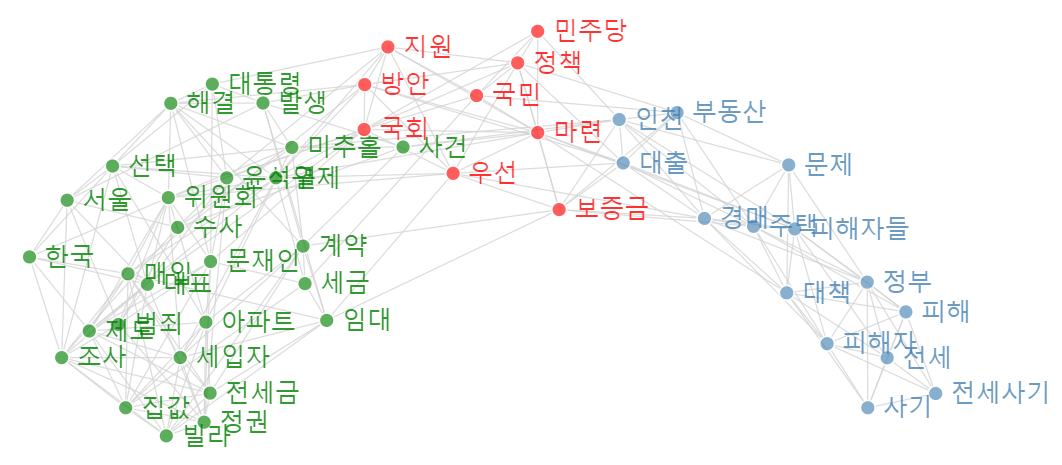[동아시아포럼] 아시아의 인구 감소 해결책, 늦진 않았지만 낭비할 시간도 없다
韓, 日 저출산 고령화로 인한 인구 감소 문제 ‘심각’ 수준 인구 전문가 “이민 시스템 지원할 수 있는 조직 구성해야” 사회적 합의 형성도 필요, 미국 트럼프 대통령의 반 이민정책 거울 삼아야
[동아시아포럼]은 EAST ASIA FORUM에서 전하는 동아시아 정책 동향을 담았습니다. EAST ASIA FORUM은 오스트레일리아 국립대학교(Australia National University) 크로퍼드 공공정책대학(Crawford School of Public Policy) 산하의 공공정책과 관련된 정치, 경제, 비즈니스, 법률, 안보, 국제관계에 대한 연구·분석 플랫폼입니다.
저희 폴리시코리아(The Policy Korea)와 영어 원문 공개 조건으로 콘텐츠 제휴가 진행 중입니다.
지난 20세기 후반 글로벌 무역 확대 따른 경제 발전 덕분에 동아시아 국가들의 인구가 가파르게 증가했다. 그러나 최근 들어 동아시아 각국에서 시차를 두고 나타나고 있는 인구 감소 및 고령화 현상은 21세기 동아시아의 경제 및 사회 발전을 크게 저하시킬 것으로 우려된다.
저출산·고령화로 인한 인구 감소는 국가의 정치·경제적 영향력 측면에서도 연쇄적인 문제를 야기한다. 병역 인구 감소는 국방력 약화를 불러오고, 세수 부족은 공공 재정에 대한 부담을 초래해 경제 발전을 저해하며, 노동 인구 부족을 상쇄하기 위한 1인당 생산성 향상 압박도 나타난다.

아시아 지역 인구 문제 유형
아시아 지역의 인구 문제 유형은 크게 두 가지로 구분된다. 첫 번째는 한국 및 일본 모형으로, 인구 감소가 사회적 기능 유지에 심각한 문제를 야기할 수 있는 위협으로 지적되는 역피라미드형 국가들이다. 이와 관련해 일본의 기시다 후미오 총리는 지난 1월 “일본이 인구 감소로 인해 사회적 기능을 유지할 수 없을 정도로 곤경에 처했다”며 위기감을 드러낸 바 있다. 한국의 저출산 및 인구 감소 문제는 일본보다 더 빠르게 악화되는 상황이다. 한국의 합계출산율은 2022년 역대 최저치인 0.78명을 기록한 데 이어 올해 올해 0.73명, 2024년 0.7명으로 계속 하락할 것으로 전망된다. 저출산 문제가 더 이상 미룰 수 없는 국가적 과제인 셈이다.
두 번재는 거꾸로 청년층 증가 현상이 나타나는 피라미드형 국가들이다. 남아시아 및 동남아시아 주요 국가들의 경우 청년층이 증가함에 따라 △인력 부족 문제 해결 △노동 소득 확대에 따른 세수 확보 △복지 시스템 선진화 등을 이뤘으나, 역피라미드형 국과들과는 정반대 과제를 안고 있다. 인도에서는 일자리 부족으로 인한 청년층의 경제적 좌절이 우익 포퓰리즘을 부상하게 하는 하나의 원인으로 작용하는가 하면, 인도네시아에서는 이같은 청년층 증가가 ‘인구학적 보너스’가 ’인구학적 부담’으로 작용하고 있다고 우려하고 있다. 이에 조코 위도도(Joko Widodo) 인도네시아 대통령은 이에 대한 대응으로 산업화 계획에 막대한 정치적 자원을 투입하기도 했다.
한편 싱가포르, 호주, 뉴질랜드 등의 국가들도 저출산 및 고령화 문제를 안고 있지만 장기간 진행해 온 이민 정책 덕분에 노동력 감소에 대한 우려가 덜하다.
인구 감소 위기, 이민 정책으로 대응해야
조지 매그너스(George Magnus) 옥스퍼드대학 중국센터 연구원은 데이터 기반 분석을 통해 아시아 각국의 인구 문제가 상이하긴 하나, 시간적 여유는 있다는 점을 강조한다. 그러면서 각국 정부가 고령화 및 노동력 저하, 청년층 과잉으로 인한 일자리 부족 등 인구 문제의 종류와 정책 대응 방침에 상관없이 세금 조정은 물론 연기금이나 이민 시스템을 지원할 수 있는 조직을 구성해야 한다고 조언했다. 단, 대응 준비 과정에 적잖은 시간이 걸린다는 것이 맹점이다.
그렇다고 비관할 필요는 없다. 최근 피터 맥도널드(Peter Macdonald) 호주국립대학 인구정책 교수가 동아시아포럼을 통해 밝힌 바와 같이 중국은 고령화와 인구 감소로 인해 사회 각 분야에 걸쳐 영향을 받고 있음에도 불구하고, 비노동 고령 인구를 지탱하고 있는 노동력의 감소가 당장의 경제적 재앙을 불러오지는 않을 것으로 관측된다. 현재 중국의 젊은 노동자들은 평균적으로 고령 인구보다 더 생산적인 데다 더 많이 소비하고 있기 때문이다.
다만 수십 년 동안 중국의 성장을 뒷받침해 온 주요 산업에 미치는 영향은 심각할 수 있다는 것이 매그너스 연구원의 분석이다. 현재 중국의 부동산 산업 문제가 심각하지 않다고 가정하더라도 향후 10~20년 동안 최초 부동산 구매자 집단의 25%가 감소해 가계 형성과 주택 수요를 저해함으로써 부동산 산업을 위축시킬 수 있다는 것이다. 이로 인해 시장 위축과 인력 부족 문제에 직면한 동북아시아 기업들이 개혁과 개방적인 경제 정책을 통해 동남아시아나 남아시아와 같이 노동력이 풍부한 국가에 대한 아웃소싱을 강화할 수 있다고 내다봤다.
이민 개방은 곧 국력의 향상
매그너스 연구원은 한국과 일본의 저출산·고령화 문제에 대한 해결책으로 ‘초대형 이민 정책’을 제시했다. 지금까지 양국의 인구 문제에 대한 개혁은 다분히 단편적이고 소극적인 형태로만 실행돼 왔다. 실제로 현재 양국은 노동력 부족을 해결하기 위해 저출산 극복에만 초점을 맞출 뿐, 이민에 대한 개방성 측면에서는 최소한만 열려있다는 평이 지배적이다. 이민 개방성 확대를 위해서는 정부 차원에서 사회적 합의를 도출하기 위해 상당한 노력을 쏟아 부어야 한다. 타국 출신 이민자들이 한국 사회의 일부로 수용될 수 있도록 사회적 공감대를 형성하고, 이민이 확대될 경우 불가피하게 발생할 수 있는 다문화주의에 적응하도록 자국민들을 설득해야 한다.
특히 이민자 유입은 국가의 성장과 구조적 변화에 대한 가능성을 제공하는 만큼, 무역 및 투자 환경의 대대적인 변화도 동반돼야 한다. 예컨대 인도와 같은 지속적인 보호무역주의 성향과 국제적 내향성, 그리고 자급자족으로의 전환점에 놓인 상황에서는 무역을 통한 경제적 변화는 사실상 실현되기 어렵다.
즉 저출산·고령화로 인한 인구 감소에 직면한 동아시아 국가들은 이민에 대한 개방성이 곧 국력으로 이어진다는 생각으로부터 문제 해결의 실마리를 찾아야 한다. 한때 이민 개방성은 미국 정치권 주류의 인식이었지만, 도널드 트럼프 행정부 집권 당시 사실상 그 효력을 잃었다. 남미 국적의 이주민에 대한 트럼프 전 대통령의 선동적인 대응과 무슬림 금지 정책이 연일 국제 뉴스의 헤드라인을 장악했고, 이같은 ‘이민 배척주의’는 근본적으로 미국의 이민 정책을 약화시키는 결과를 낳았다.
조 바이든 행정부 들어 이민 정책 복구에 다소 진전이 있는 듯 보였으나, H1B 비자 등 추첨 형태로 운영되는 프로그램은 우수 인력 이민 장려 목적에 맞지 않다는 평가가 지배적이다. H1B 비자는 당첨 확률이 복권 수준으로 낮다고 해서 유학생들 사이에서는 로또 당첨에 비유될 정도다. 또한 중국 유학생들이나 이민자들, 과학자들이 미국 내 스파이 활동의 매개체가 될 수도 있다는 지나친 불안감 확대는 자멸적 발상이라는 지적도 있다.
중국은 현재 한국, 일본 등의 주변 국가들이 겪고 있는 인구 감소 문제를 향후 수십 년간 겪게 될 상황이지만, 대규모 이민을 감당할 수 있는 정치적 역량은 이들 국가보다 훨씬 더 부족한 편이다. 반면 미국은 역량과 열정을 갖춘 이민자들에게 열린 사회를 지향하는 정책 덕분에 경제 성장 동력 및 소프트 파워 확보라는 관점에서 중국 대비 두드러진 우위를 유지하고 있다.
Asia has the time to address demographic challenges, but not much time to waste
The ageing and shrinking of populations in many parts of East Asia will be a defining part of their economic and social development this century, just as the trade-fuelled economic boom was in the latter half of the previous one.
The ageing crisis will have a cascading effect on many aspects of national economic and political power, making it harder to staff militaries, increasing the burden on public finances and making it imperative to squeeze more productivity out of a smaller working-age population.
Japan’s Prime Minister Fumio Kishida captured the sense of the crisis when he declared in January 2023 that his country ‘is on the cusp of whether it can maintain its societal functions’ with a declining population. South Korea is in the exact same place, if not more so.
At the same time, major economies in developing South and Southeast Asia face the opposite challenge of creating enough jobs for the growing number of young people who need them — and getting enough of those people into the pool of taxpayers to fund the future liabilities of nascent welfare systems unprepared for the needs of a larger older-aged cohort.
The frustrated economic ambitions of India’s youth have been one element in the rise of a right-wing populism; in Indonesia, President Joko Widodo has repeatedly expressed his concern about having his country’s ‘demographic bonus’ turn into a ‘demographic burden’ and has thrown a lot of political capital at new industrialisation initiatives.
Add to this a third category of countries like Singapore, Australia and New Zealand, which face similar problems of low birth rates and ageing demographic profiles, but a less acute problem of a shrinking workforce on account of their long-term commitment to large-scale migration.
In this week’s lead article, George Magnus provides a data-rich survey of the state of these demographic challenges to national prosperity in Asia, accentuating the fact that the region’s governments have time to develop the policies needed to confront the risks to their economies and societies posed by their different demographic challenges.
The unambiguous subtext to his analysis: regardless of whether governments are facing the challenges of ageing and shrinking workforces or a glut of young people who need to be incorporated into productive jobs, governments of all political stripes will have to assemble the coalitions that can support rejigging tax, pension funds, welfare and immigration systems in response to those challenges.
These processes take time. As Peter Macdonald highlighted in the recent edition of the East Asia Forum Quarterly, while the impacts of China’s ageing and shrinking population are myriad, for the time being a shrinking workforce supporting more and more non-working elderly people need not be the harbinger of economic disaster: the younger workers are on average both more productive and consume more than those of older generations.
Still, the impact on industries that have underpinned growth for decades could be profound. Magnus points out that if China’s real estate industry woes weren’t bad enough now, ‘[t]he expected 25 per cent fall in the cohort of first-time property buyers over the next decade or two will crimp household formation and housing demand, forcing the sector to shrink’. Faced with shrinking markets and shortages of workers at home, firms from Northeast Asia will intensify outsourcing to labour-abundant partners in Southeast Asia and South Asia, if they can get reforms right and embrace open economic policies.
In Japan and South Korea, a much bigger migration program will have to be part of the solution. Reforms in each of these countries have so far been piecemeal, focused more on doing the bare minimum necessary to address their acute labour shortages. But that implies hard work for political elites to build a new consensus around the need to accept a much higher foreign-born share of the population as a natural element of national life and — whisper it — nudge their societies towards adapting to the multiculturalism that inevitably comes with mass migration.
Different population endowments across the region offer huge possibilities for regional growth and structural change. But a major transformation of the trade and investment landscape is required to seize them. With India’s lingering protectionist bent and the current international shift to inward-lookingness and self-sufficiency, can that potential for economic transformation through trade be delivered?
The challenges that the ageing and shrinking states of East Asia face shines a light on one thing that was once acknowledged across the political mainstream in the United States: the idea that the country’s openness to migration was a source of national greatness. That consensus weakened in the Trump era. Trump’s demagogic response to irregular migration from Latin America, and his ‘Muslim ban’, dominated headlines — but a more insidious element of the nativist agenda he empowered was the undermining of the US skilled migration program.
Progress at rehabilitating the system has been made in the Biden era, but the US’ lottery-like skilled migration program is not fit for purpose. An over-the-top anxiety about the potential for Chinese students and migrants, particularly scientists, to be a vector for espionage is self-defeating.
As China faces the demographic problems of its near East Asian neighbours over the long run, with even less political room for mass migration than its neighbours have, the openness of US society to talent and ideas from abroad should surely be played for the crucial economic and soft-power advantage that it is.
The EAF Editorial Board is located in the Crawford School of Public Policy, College of Asia and the Pacific, The Australian National University.



























